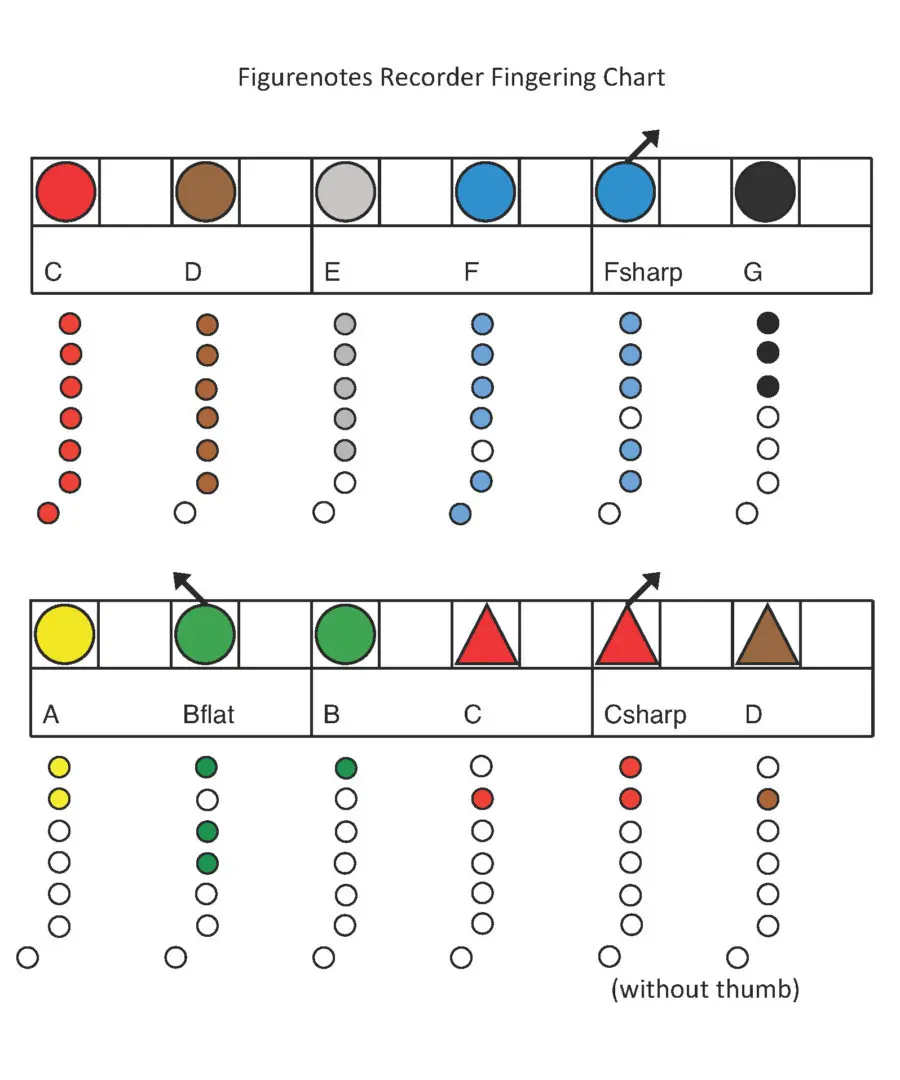No products in the basket.
For the second instalment of our mini-series on how to use Figurenotes with different instruments, we will focus on woodwind. In the last blog, we covered strings and how to get started. This focused on violin, but can be applied to viola, cello, and double bass. If you have any thoughts or questions, please let us know.
Let’s break down the most common questions we hear when discussing Figurenotes and woodwind instruments:
“Where do I put the stickers?”
Figurenotes for woodwind is very similar to using standard notation. You teach fingering and notes, just as you would with standard notation. You replace the note on the stave with a Figurenotes coloured shape instead, e.g. B on recorder is a green circle. This means there is no need for Figurenotes stickers when teaching woodwind. The colour helps the pupil to distinguish between notes, which builds up a strong association between note and finger pattern. It is up to you whether you call it by the letter name or the colour (or a bit of both). You can also put the letter name within each Figurenotes shape using the Figurenotes software.
You can use our Figurenotes fingering charts to show the hand shapes for each note. We have charts for recorder, saxophone, flute, and clarinet. You’ll find these on the Resource Base, along with some easy tunes to help you get going with wind instruments.
“What do we do about transposition?”
When we consider transposition using Figurenotes, there are two schools of thought:
• Concert C is always red.
This is great if you’re only planning on working in stage 1. It is much easier in a band session to call just one colour. However, there are drawbacks to this. You would hope to change these colours when you come to progress through stages 2 and 3. You should also be aware that notes that are fairly simple for many instruments can be very complicated on woodwind instruments.
• Written C is red
This is the best way to allow progression on your instrument. Progressing through stages 2 and 3 to standard notation is easy and follows the same colours throughout. It is also good to teach new notes in a sensible order. It can be a little more complicated for the leader in band practice, but as long as everyone learns what their part is, it works really well.
Remember you can access the Figurenotes fingering charts in the Resource Base. Not a member? Join for less than £2 a month. You also get a discount on training days, such as the Music Teacher’s Toolbox on November 18th, 2017.
